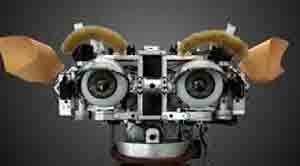[ad_1]
 The collective behavior of decentralized, self-organized practices (artificial or natural) that can maneuver fast and in a coordinated manner is referred to as swarm intelligence.
The collective behavior of decentralized, self-organized practices (artificial or natural) that can maneuver fast and in a coordinated manner is referred to as swarm intelligence.
FREMONT, CA: In the evolution of certain social species, swarm intelligence is a natural step. It explains why ants swarm, bees swarm, fish school, and birds flock together. Nature has demonstrated that when individuals collaborate and think as a united system toward a single goal, they are more prone to achieve that goal faster and more precisely than if they attempted it alone. To put it another way, they are smarter together than they are individual.
The collective behavior of decentralized, self-organized practices (artificial or natural) that can maneuver fast and in a coordinated manner is referred to as swarm intelligence. Each species’ closed-loop, collaborative behavior is unique in nature. For example, ants use pheromones to guide each other to food, bees utilize vibrations, fish detect tremors in the water, and birds catch motions spreading throughout the flock.
Scientists have adopted what they have learned from nature to technology. However, when the concept of swarm intelligence is applied to the field of Artificial Intelligence (AI), especially in robotics, the collective intelligence is increased through computational systems that are normally composed of a combination of agents or boids (a computer simulation that mimics flocking bird behavior) that cooperate locally with each other and in their surrounding environment. As no central control defines each agent’s or boid’s behavior, it is only via their local collaboration that a collective, greater global behavior emerges to solve a complex problem (one that the individual agents/boids are unaware of).
A robot swarm is often made up of small, indistinguishable robots that each have a sensor (as well as a camera, radar, and sonar to receive information about their surroundings). When one robot gathers and shares data with the others in the group, the individual robots can work together as a cohesive unit. Thus, a robot swarm can combine the information and insights of millions of self-contained, autonomous agents (or boids) to produce a single, unified conclusion.
In the robotics arena, swarm intelligence provides a wide range of applications and benefits. The following are the main advantages of swarm intelligence:
• Flexibility: The swarm system reacts to both internal and external disruptions.
• Robustness: Tasks are completed even if some of the agents fail.
• Adaptation: The swarm intelligence can adjust to both known and unknown stimuli.
•Self-Organizing: Roles are not predefined—they occur.
• Decentralized: Since there is no central control, quick, local collaboration is possible.
[ad_2]
Source link






Leave A Comment
You must be logged in to post a comment.